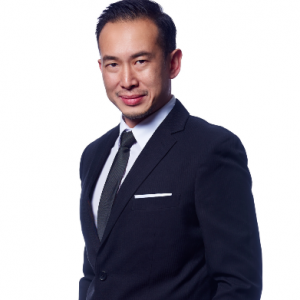
Southeast Asia (SEA), with over 650 million population and a thriving startup ecosystem, is one of the global growth engines. Investors from around the world have been making big bets on young ventures in the region for quite a few years.
While the region’s startup industry keeps on attracting massive funding from investors across the globe, a new trend has picked up over the past one-plus year — investments from South Korean have grown. This trend is more visible lately, with the likes of Yanolja, Woowa Brothers, and GEC-KIP Fund actively supporting tech startups in SEA, which comprises several countries and archipelagos.
What attracts Korean investors into SEA
“There are a few key reasons why there’s been more interest in SEA from Korean investors, and it’s a combination of what they can offer and what they hope to achieve investing in SEA,” says Daren Tan, Managing Partner of Golden Equator Ventures.
SEA offers enormous opportunities and higher investment returns, which makes it attractive to investors from North Asia, including South Korea, where growth and returns are more muted.
Charles Rim, General and Founding Partner at Seoul-based Access Ventures, agrees. A shrinking home market is a reason why Korean investors are looking to invest in Southeast Asia. “There is a slow-down of sorts in Korea. So investors are now looking to go global and Southeast Asia is a good option for its proximity to the home market,” he says.
Also Read: AMTD Digital acquires Singapore’s insurtech startup PolicyPal
The emergence of unicorns such as Grab and gojek and their massive fundraises also give confidence to Korean investors to turn their focus to SEA. Deal flow is no longer scarce, which is also a draw.
“Seasoned Korean investors – chaebols, corporations, established funds – can see the opportunity that SEA presents as a fertile ground for the convergence of technological expertise and abundant, affordable labour,” Tan points out.
“But beyond Korea being interested in SEA, many startups in the region also have the desire to grow much larger, and that’s where a North Asia/Korea play could come in,” says Tan, adding that Korean investors can also offer their strong networks back home to present an attractive expansion plan or exit strategy for many startups in SEA.
There is also another big factor. On a government level, the Moon Jae-in administration in South Korea had launched a New Southern Policy in 2017 –a commitment to increase trade with SEA and prosper together with the region. The policy pledges support for trade and investments, including the pursuit of foreign trade agreements (FTAs) and creating new tech business opportunities with ASEAN nations, so looking into SEA is aligned with the government policies.
One example of Korean investors’ entry into SEA is Korea Investment Partners (KIP) partnering with local institutions like Golden Equator Ventures (GEV) to leverage existing regional expertise in co-managing a fund targeted at Southeast Asia, called the GEC-KIP Technology and Innovation Fund (GEC-KIP Fund).
The fund most recently invested in cloud-kitchen startup Dahmakan’s US$18 million Series B round alongside Korea’s app development firm Woowa Brothers. This is yet another example of Korean players seeing synergies with startups in SEA. Other Korean corporations such as Naver, etc. have also entered the region via various vehicles.
“We strongly believe that the cross-sharing of strategic expertise and technical knowledge, along with the influx of smart capital, will create exciting possibilities that will mutually benefit stakeholders, entrepreneurs and corporations, from both Southeast Asia and South Korea,” Tan remarks.
Eddie Lee, Senior Associate, who covers South Korea for White Star Capital, feels that this trend is very similar to how US-based VCs saw an opportunity to invest in China/India ten years ago when successful US models were being replicated there regionally.
“Most of web 2.0 consumer startup models are now built out, well funded, and are mature in Korea. So Korean VCs are looking for opportunities to continue the same strategy of building out proven models in emerging regions,” Lee shares.
Geographically and culturally, it was the easiest for Korean investors to enter SEA. In parallel, Korean VCs are actively building a working network in the region to assist mature Korean startups (mostly unicorns) to expand business there through partnerships or competitive benchmarking, Lee explains.
Another reason is that Korea’s Big Techs — such as Naver and Kakao — see an opportunity to become a globally dominant organisation through SEA. Similar to how FAANG has transatlantic dominance, Naver and Kakao have ambitions to build regional dominance in Asia, excluding China.
“As Korea has been the leading FDI in Indonesia and Vietnam, Koreans feel more familiar with the territory. The first wave was basic manufacturers such as textiles, and then tech hardware such as cellphones and semi-conductors, and now tech startups,” adds Rim of Access Ventures.
Also Read: The future of startup management lies in spontaneity
Attractive industries
According to Tan of Golden Equator, Korean VCs tend to be bullish on deeptech and the entertainment sector — two segments in which they are strong at home.
As for deeptech, South Korea had over a million patents in force in South Korea in 2018, and Chaebols such as Samsung and LG are among the top patent applicants. So, it makes sense for them to continue to invest in leading technologies.
“On the entertainment side, we invested last year in Gushcloud, alongside KB Investment and our co-manager Korea Investment Partners. Another recent example and the sizeable round is Mirae’s investment in digital entertainment company POPS,” Tan reveals.

Daren Tan, Managing Partner of Golden Equator Ventures
When it comes to corporates, they, in the beginning, invested across sectors to get better visibility on the technologies that were growing in the region and the trending tech that could affect them.
So they typically started investing in funds to get better knowledge and then potentially leveraged on co-investment rights to invest when it made sense.
One example could be Hanwha, which entered the region a few years back by investing in a couple of the Southeast Asia fund managers but is now doing direct investments using its newly-launched fund.
“Later on, investing mostly in sectors directly synergistic with corporate’s core operations, so looking into companies they could potentially acquire or partner up with down the road, to see how they can potentially work with those companies or incorporate the business to truly realise the synergy. One example could be Yanolja’s further investment into Zen Rooms,” Tan says.
Of late, agritech, consumer internet and impact sectors have seen an uptick in terms of investment. The agritech investment is partly influenced by incentive schemes provided by the Singapore government agencies to help develop key sectors for the local economy.
Also Read: Capital markets platform iSTOX raises US$5M from Korea’s Hanhwa
As for consumer internet, the market has seen more companies launching social commerce platforms these days and are getting good traction, basing consumer choices on a circle of trust. Summer International is a good example.
“We think we’ll see more funds making a shift towards impact investments, implementation of proper ESG policy, as well as monitoring and doubling down on sectors such as financial inclusion, edutech and digital health,” Tan goes on.
Major deals by Korean investors
Dahmakan, Malaysian cloud kitchen company and a Y Combinator startup, recently closed a US$18 million Series B round, led by Rakuten Capital, Partech, Woowa Brothers, and Golden Equator Ventures.
On the M&A side, Gushcloud bought back shares from Yello Digital Marketing Global (YDMG) in 2018, putting its founders back in the driving seat.
Another deal is Yanolja’s, a leading travel group in South Korea, strategic investment in ZEN Rooms, a franchise of economy and mid-range hotels in Southeast Asia.
What is interesting though is that many of later-stage deals are strategic. ‘Strategic’ can defined as: 1) the investing companies are looking to acquire/partner with the investees in the future, 2) investors can open doors in their home markets (in this case Korea) for partnerships with other players, or 3) the investors have access to opportunities that could be potential exit routes for the investees.
“In SEA’s case, we haven’t seen many successful tech IPOs, barring Sea Group and Razer. Hence, it’s hard to engineer large exits in the billion-dollar range if the exit is via M&As,” Tan feels.
“Hence, there is a strong North Asia (Korea included) play here. It’s not just Korean investors wanting to invest in SEA for stronger returns than their domestic markets, but SEA companies do need access to other regions for growth, scale, partnerships, and potential exits.
Also Read: Today’s top tech news: South Korea’s ATU Partners launches e-sports-focussed growth fund
Hence, if the exit landscape is still maturing, it does make sense for investors to look at some of these deals more from a strategic angle rather than purely financial,” he continues.
As the success of M&A often relies for a large part on the ability to integrate to realise the synergy, it makes sense for strategics to first invest in those potential targets or partners, and overtime being able to assess the true value of buying versus partnering, alongside with their ability to work with the management team.
“Finally, for some strategics, the ability to potentially work with some of these companies can also be more valuable than their actual return on capital invested,” Tan says.
“We believe we will see more large financial investors being more active in this region as we can demonstrate a viable path for companies in this region to exit via IPOs in the US, or potentially Hong Kong. However, we will probably need to wait for another one to two years for the public markets to stabilise as we’re entering a recession,” Tan warns.
—
Image Credit: 123rf Stock Photos
The post Why Korean investors are getting attracted to Southeast Asia appeared first on e27.